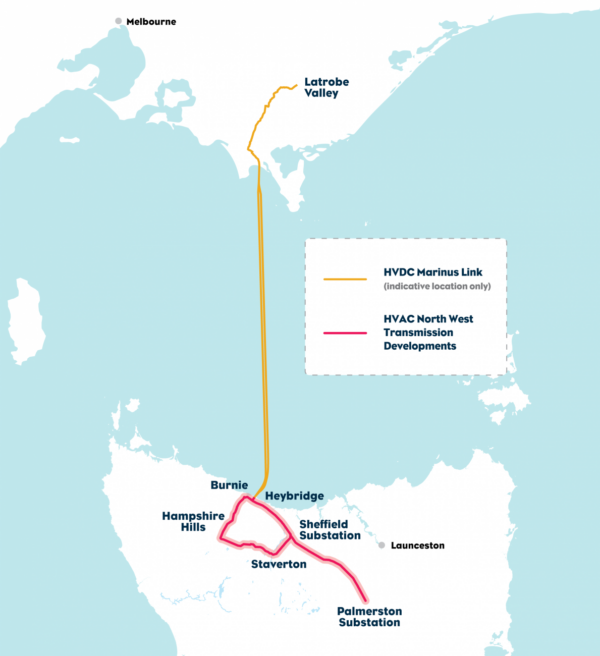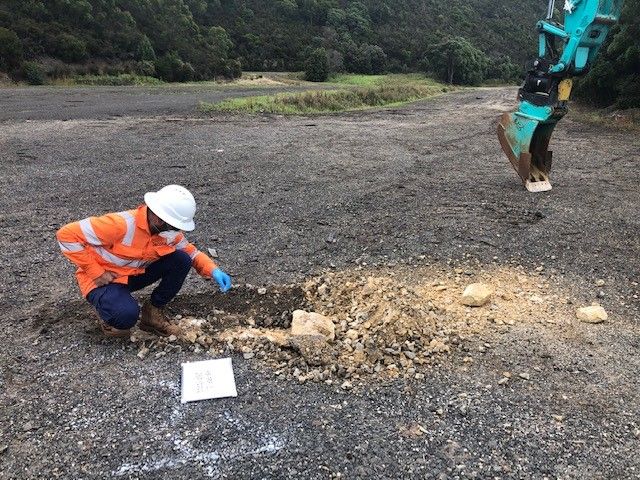The Australian Energy Regulator (AER) has published a determination approving early works expenditure, or revenue determination, enabling Marinus Link to recover the costs for designing and planning the multi-billion-dollar project through to a final investment decision.
The determination approves proposed capital expenditure of $196.5 million (USD 132 million) for early works, including technical design and specifications, project management, environmental impact assessments, community and landowner engagement and procurement strategy and execution.
Marinus Link is a proposed 1,500 MW transmission line between Tasmania and Victoria. The project originally comprised two 750 MW high voltage direct current (HVDC) cables running 255 kilometres undersea and 90 km underground between Burnie, Tasmania and Latrobe Valley, Victoria.
Soaring project costs have however prompted a rethink with the project to now prioritise the delivery of just one 750 MW cable in the first instance at an estimated cost of $3.3 billon, with negotiations to continue on a second cable.
The AER said Marinus Link has proposed $196.5 million in forecast expenditure for early works activities, partially covered by grant funding, with the remainder, $128.9 million, subject to the revenue application.
In its determination, the regulator said it had examined Marinus Link’s proposed capex forecast and considers “the amount proposed is reasonable, prudent and efficient” to deliver early works for the project.
Marinus Link Chief Executive Officer Caroline Wykamp welcomed the determination, saying it has given the green light to make Marinus Link a reality.
“The revenue determination guarantees the project can only recover costs in line with customers’ best interests,” she said.
“Today’s determination shows that Marinus Link is not spending more than what is necessary to plan the project.”

Marinus Link will later submit an application seeking to recover revenue for project construction and implementation costs once the project has been committed to, passed the Australian Energy Market Operator’s (AEMO) feedback loop process and a final cost estimate is available.
The AER said this staged approach has been adopted to “reduce project uncertainty and identify project risks before committing to the full project.”
The project has been classified as a priority investment and ‘actionable’ in AEMO’s Draft 2024 Integrated System Plan (ISP), which maps the optimal path for transmission developments in the National Electricity Market (NEM). The ISP recommends commencing operation of cable one in 2029 and cable two in 2031.
To meet these recommended timeframes, Marinus Link said construction must commence in 2025. Marinus Link is working towards a final investment decision on the project by the end of 2024.
Marinus Link has forecast that the first stage of the project will contribute $1.4 billion of economic stimulus to Tasmania and $1 billion to Victoria and support 1,400 direct and indirect jobs per year in Tasmania during peak construction, and 1,000 direct and indirect jobs per year in Victoria during the same time period.
This content is protected by copyright and may not be reused. If you want to cooperate with us and would like to reuse some of our content, please contact: editors@pv-magazine.com.









By submitting this form you agree to pv magazine using your data for the purposes of publishing your comment.
Your personal data will only be disclosed or otherwise transmitted to third parties for the purposes of spam filtering or if this is necessary for technical maintenance of the website. Any other transfer to third parties will not take place unless this is justified on the basis of applicable data protection regulations or if pv magazine is legally obliged to do so.
You may revoke this consent at any time with effect for the future, in which case your personal data will be deleted immediately. Otherwise, your data will be deleted if pv magazine has processed your request or the purpose of data storage is fulfilled.
Further information on data privacy can be found in our Data Protection Policy.